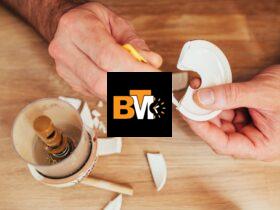A literature review is one of those assignments that appears straightforward—just sum up what other people have written, right? Not really. A successful academic literature review is not as simple as writing down studies or cutting and pasting citations. It’s more about showing critical comprehension, combining information, and building the foundation for your research. If you’re tackling an essay, dissertation, or thesis, you’ll likely need to master this skill—and that’s where strategic preparation and a bit of assignment help can make all the difference.
In this guide, you’ll get a clear, practical roadmap to craft a well-structured literature review that’s not just academically sound, but also compelling enough to impress any examiner.
What Is an Academic Literature Review?
A literature review is a critical analysis of existing academic literature on a specific research issue, problem, or topic of study. It’s not a summary—it’s an evaluation that:
- Highlights trends, patterns, and gaps in research
- Highlights significant arguments and key thinkers
- Sets the intellectual context for your research project
Whether you’re submitting a standalone work or part of a dissertation, a literature review demonstrates that you’ve done your academic homework.
Why Do I Need a Literature Review?
A solid literature review shows that:
- You have an understanding of the academic debate surrounding your topic
- You are able to use current research critically and not just reproduce it
- Your research is founded on established theory and evidence
- You’re aware of gaps or debates in the subject
Simply, it renders your research acceptable by situating it in an academic context. And if you’re looking for A-star grades—or struggling to get started—some assignment help can provide that minimal amount of help required to establish your foundations well.
Kinds of Literature Reviews
It is essential to realize the type of review you are preparing. Following are the most common formats:
Narrative Review
Purpose: Offers an overview of a broad topic
Approach: Thematic and descriptive, often subjective
Used in: Essays, general overviews, introductory chapters
Systematic Review
Purpose: Exhaustive and systematic literature synthesis
Approach: Structured, based on stated inclusion/exclusion criteria
Used in: Research projects, dissertations, evidence-based work
Scoping Review
Purpose: Outlines the research field and defines gaps
Approach: Broad, exploratory, and descriptive
Used in: Research proposals, initial-stage research projects
Knowing what format is right for your academic purposes will guide how you acquire, organize, and assess your sources.
Step-by-Step Guide to Writing a Successful Literature Review
Let’s break it down into smaller steps.
Step 1: Define Your Topic and Scope
Before you go digging through journals or databases, clarify your topic. A mushy or overly broad topic will result in your review being confusing and disorganized.
Ask yourself:
- What’s the core research question?
- What themes or variables are of greatest relevance?
- What’s the time period (e.g., only after 2010)?
- What kinds of sources will be included?
A defined scope is helpful in keeping your research focused and making it easy to sort through relevant sources.
Step 2: Search and Select Relevant Sources
Your goal here is to find top-notch, peer-reviewed sources. Don’t be satisfied with the first five results—look deeper.
Tips on finding sources:
- Use academic databases (e.g., JSTOR, Google Scholar)
- Utilize filters to restrict results based on date, language, or type
- Utilize Boolean operators (AND, OR, NOT) to narrow searches
- Follow key paper references to trace seminal work
Don’t forget to store all your citation data. Citation management at this phase will prevent panic at the end.
Step 3: Read, Annotate, and Organise
Careful reading is imperative. Scan for relevance first and then read in-depth those pertinent ones. Take structured notes and synthesize findings under themes or arguments.
During reading, pay attention to:
- Key research questions and findings
- Methodologies and theoretical perspectives
- Strengths, limitations, and conclusions
- Relevance to your research topic
Tip: Themes categorize papers. This facilitates later when outlining your literature review. If it begins to overwhelm, asking for assignment help can make sense and save time.
Step 4: Analyse and Synthesise
It’s now time to move on from summarising and begin making connections.
Ask yourself:
- What do various studies have in common, and what do they disagree upon?
- Are there any repeating theories or models?
- Are there any glaring gaps or inconsistencies?
- How has research within the field progressed throughout time?
Avoid doing this simple mistake: a list of summaries with no analysis. Instead, group ideas and criticise them under clear thematic headings.
Step 5: Organize Your Literature Review
A literature review should have a logical, readable structure. Organize your ideas using headings and subheadings.
Simple structure:
1. Introduction
- Define your purpose and topic
- Briefly outline your approach to selecting sources
- Explain the structure of your review
2. Thematic or Chronological Discussion
- Divide the body into main themes or historical developments
- Introduce critical observations, comparisons, and judgments
- Use subheadings to guide the reader
3. Conclusion
- Summarize important findings from the literature
- Highlight gaps or areas for further research
- Explain how your research fits into this context
Bonus tip: Don’t overdo the jargon in your review. Make it academic but accessible—especially for younger examiners or multidisciplinary panels.
Key Tips for a Successful Literature Review
Even if you’ve done everything, a few tips from experts can take your review to the next level:
Be Selective, Not Exhaustive
You are not writing an encyclopedia. Emphasize quality and relevance over quantity. Select studies that best represent each argument or theme.
Use Your Own Voice
Do not parrot other researchers. Show where you agree, where you disagree, or where you see gaps. Your ability to synthesise indicates critical thinking.
Stay Organised
Use tables, mind maps, or citation software to manage your sources. Losing track of your research is an easy way to derail progress.
Keep Your Language Formal Yet Approachable
You’re writing for an academic audience, but clarity is key. Use plain English where possible, and explain any complex terms.
Watch Out for Plagiarism
Even paraphrasing, never forget to acknowledge. Mistracking could lose you marks—or worse. In doubt, refer to a friend or use professional assignment assistance to analyze your references.
Errors to Avoid
It’s just as helpful to know what not to do as it is to know what to put.
- Too descriptive: Don’t simply summarize—analyze.
- Lack of structure: Without headings, readers (and markers) will get lost.
- Low quality of sources: Blogs and non-peer-reviewed websites won’t do.
- Missing references: Proper citation is essential for each idea or quote.
- Excessive use of direct quotes: Paraphrasing shows better comprehension.
Being aware of these pitfalls early will prevent much rework later on.
Final Touches: Editing and Proofreading
Give your work a final touch before you press submit.
Checklist:
- Is the review well-organized with good headings?
- Have you included at least one citation per paragraph?
- Are your arguments critical and well-ordered, rather than descriptive?
- Is the language formal, precise, and UK-English friendly?
- Have you taken advantage of your use of the term assignment help within natural context (5–8 times in total)?
Reading out loud or using grammar tools can help catch clunky phrasing or typos. A tutor or peer quick check at the last minute can also be useful—especially if you’re aiming for a distinction.
Conclusion
Writing a literature review is not an academic check-box exercise—it’s an important skill that demonstrates depth, understanding, and critical thought. When done properly, it sets the stage for your entire research process.Remember, thinking ahead, being critical, and being organised are your best resources. And when things get tricky—or you just need a second opinion—trustworthy assignment help can help to tease out the best in your writing, making it more incisive, targeted, and scholarly.For those looking to perfect their review or would like to hear expert views, Assignment in Need (assignnmentinneed.com) is a trusted alternative to approach when looking to attain perfection in your scholarly work.







Leave a Reply